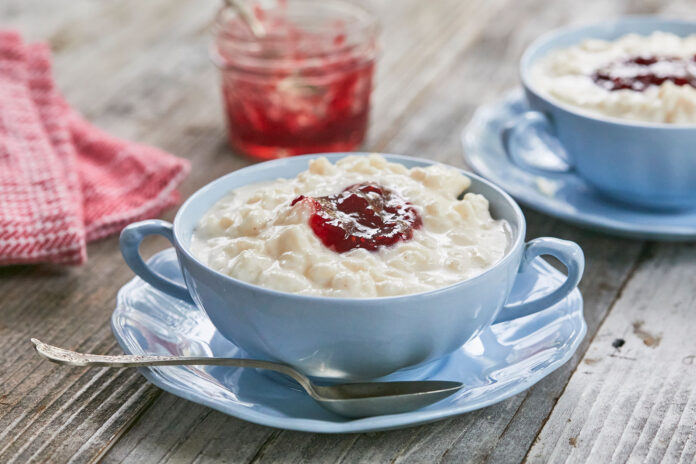Rice pudding often takes the lead when it comes to creamy, delicious desserts with fragrant flavors. The dessert is easy to prepare, and there are many variations to try out.
While tastes and preferences can vary, the best rice pudding should be creamy and silky. Most people have a classical way of making dessert, but a few tips can help you get better results like the ones found on https://carolinarice.com/cooking/how-to-make-the-perfect-rice-pudding/.
Here are some great tips for making your favorite rice pudding.
What Is Rice Pudding?
Rice pudding is a delicious dessert made of rice and sweetened milk. There are numerous rice pudding variations consisting of different ingredients and seasoned with various spices. You can also come across some pot recipes that incorporate egg yolk to give the dessert a rich, custardy texture.
You can use whole rice kernels, ground rice mixed with sweeteners. Often, the pudding is garnished with chopped nuts, including almonds, cashews, and pistachios. You can also include different dried fruits such as apricots, raisins, and pomegranate seeds.
Using Rice in the Pudding
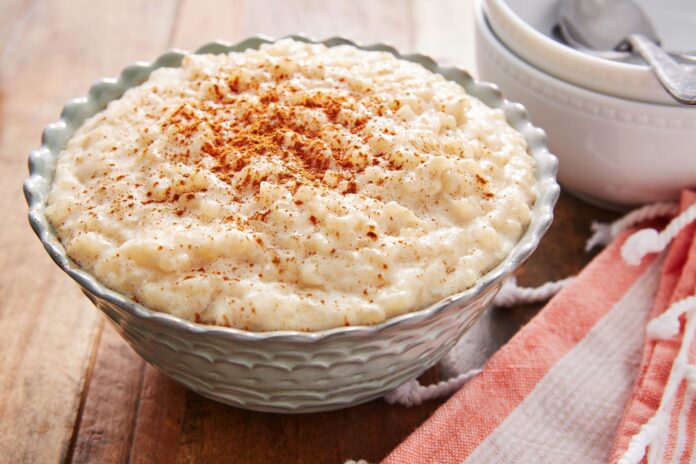
Rice plays an essential role in preparing a delicious pudding. While it gives the dessert its flavor, its primary function is giving the pudding a unique texture. Also, rice thickens the pudding by transforming the cream or liquid milk into a slightly thick consistency.
The starch in the rice improves the consistency and texture of the pudding. But starch isn’t only present in the rice; you can get it in corn, wheat flour, and potatoes. While the ingredients have starch, its nature is different in each ingredient. And that’s because starch consists of multiple molecules, and when the properties change, the quality and type of starch change too.
The Starch in Rice
Amylopectin and Amylose are the basic molecules that make up starch. The ratios of these molecules determine the appearance and texture of your pudding, along with whether your dessert will be starchy or waxy.
Typically, these molecules are long glucose chains called monosaccharides belonging to the carbohydrates group. Specifically, Amylose is a linear chain of monosaccharides with few branching. On the other hand, Amylopectin has numerous branches attached to the long linear chain. The type of starch molecules has a significant influence on the formation of your pudding. For example, Amylose molecules are best for creating gels, while Amylopectin is responsible for thickening the paste.
The Basic Principle Behind Making Rice Pudding
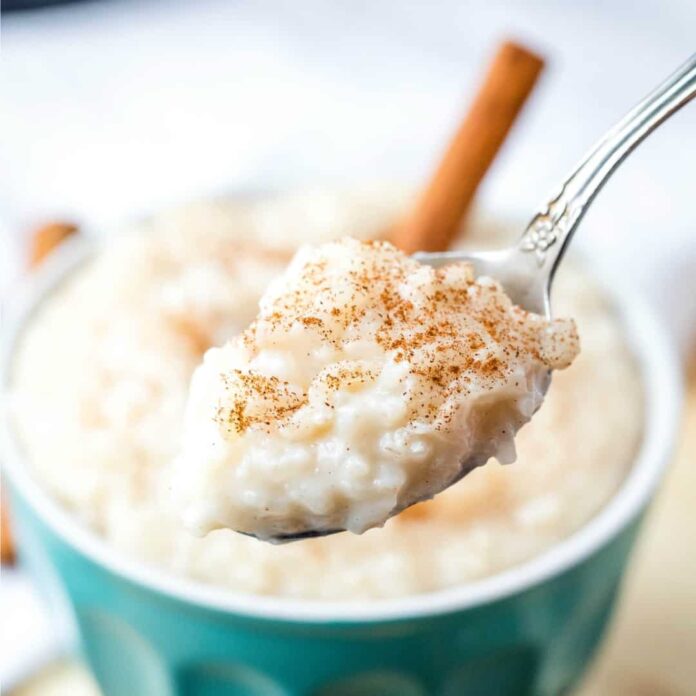
When preparing a rice pudding, the different types of starch undergo multiple transformations. Notably, the starch properties make it ideal for absorbing moisture. When you gently heat the mixture in milk or water, the starch swells and absorbs the available water. At higher temperatures, the starch starts to break. This transformation thickens the mixture due to the breakdown of the starch molecules. This principle is known as gelatinization.
Best Rice for Making the Perfect Pudding
Typically, rice with high amylose content tends to remain intact, and it’s often great for preparing dry, separate rice kernels. On the other hand, any rice with lower amylose content gets sticky when cooked. Ideally, the amylose content can range from 0% to 30%.
However, rice classification isn’t very precise. Rice classification is based on grain size, application, and breed. However, this rarely determines the amylose content in the rice, so it’s best to use the recommended application as a benchmark to guide you.
When it comes to preparing the pudding, you can use any rice, but it’s important to remember that various types of rice will give you different results. For a thick and sticky dessert, go for rice with low amylose content. When you want to have the grains in your pudding, go for high amylose content.
Recipe
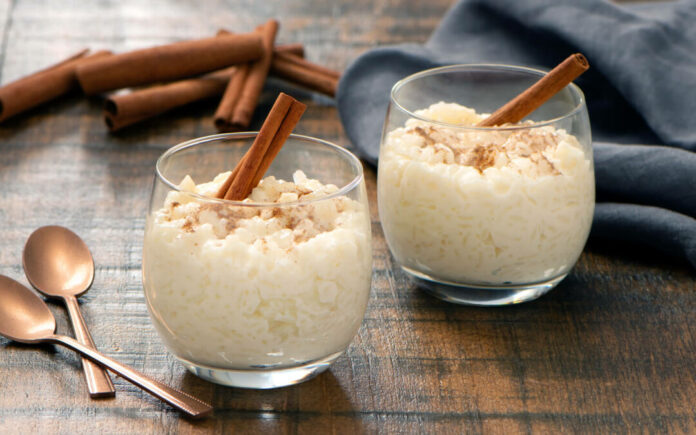
If you want to test different rice varieties and see what matches your preferences, this recipe can be helpful.
Ingredients and Instructions
- 250g of water
- 50g of rice
- 50g of sugar
- 1 bay leaf
- 1/8 tablespoon of cinnamon
Preparation
- Mix all the ingredients in a large saucepan
- Place the saucepan on a heat source and bring to a boil and lower the heat when the milk starts to boil. Don’t let it boil over or overcook
- Stir the mixture gently and cook under minimal heat until the rice is well cooked. Once all the grains are thoroughly cooled, take the food away from the heat. If you notice the rice is half cooked or is sticking on the pan, add more milk and continue cooking under low heat.
- If the cooked pudding gets too dry, add some more milk and stir thoroughly to get an even viscosity
- Cover your pudding and let it cool down
Grinding
When the rice is ground, it loses its original structure and gives you a smooth pudding. When you break the rice grains, you enhance the release of Amylose from the grains. As such, the pudding cooks better and quickly.
Recipe: Almond Rice Pudding
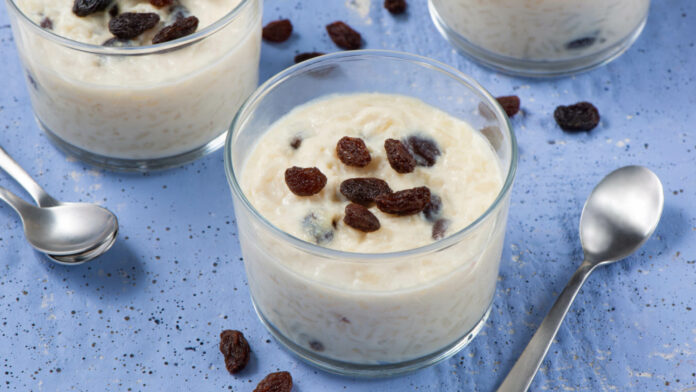
This recipe is best for preparing a smooth rice pudding:
Ingredients and Instruction
- 30g of almond meal
- 50g of rice
- 200ml of water
- 1 egg yolk
- 30g of pistachios meal
- 500ml of milk
- 2 drops of vanilla
- A pinch of cinnamon
- 150g of sugar
- A handful of pistachios and almonds (roasted)
Preparation
- Pour the water and rice into a cooking pot and place on medium heat. As the water starts bubbling, take the pot off the heat and cover it with a lid. The idea is to slightly soften the rice. It’s okay if the rice is slightly overcooked
- Grind the pistachios and almonds into a rough meal in a food processor. Be careful not to over-grind them since you don’t want a fatty or sticky blend. Put the meal in a boil for later processing
- Put the softened rice in a food processor and grind until you get a smooth paste without any grains left
- Mix the rice slurry, vanilla, egg, and milk in a large pot. Whisk thoroughly until you get a good mixture and boil the ingredients under medium heat
- As the pudding thickens, add the nut meals and sugar while cooking on low heat. Once the sugar is completely dissolved, remove from heat
- Add the roasted nuts and cinnamon on top for better texture and flavor
Endnote
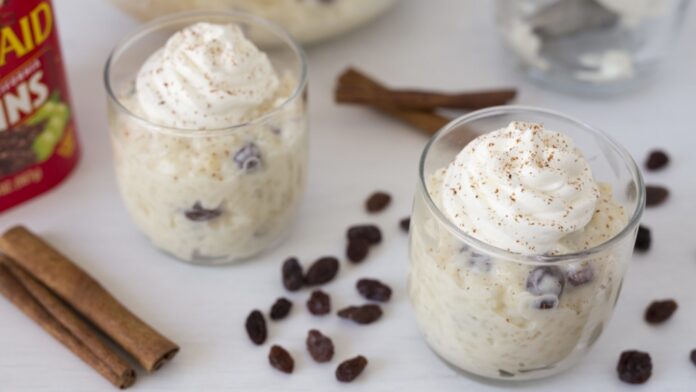
Rice pudding is a classical dish that is satisfying and soothing for vegans and non-vegans. While there are numerous ways of making the dessert, the results can vary. Once you understand the basics, your rice pudding will never be the same again.

